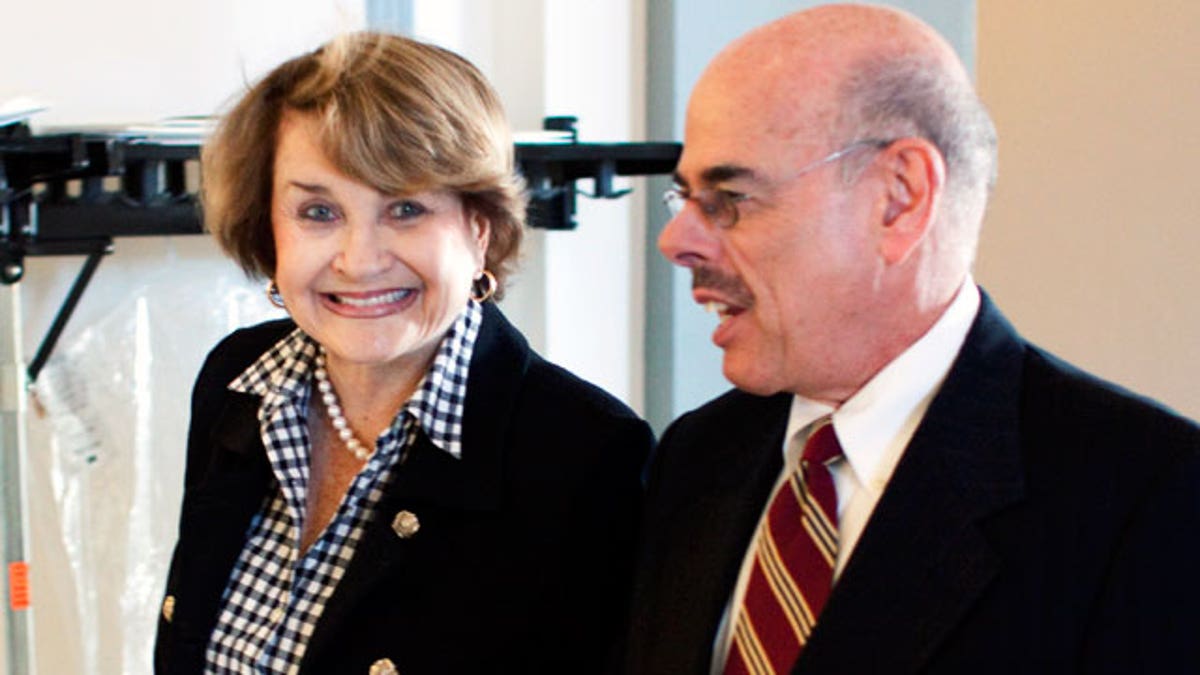
The 'Slaughter Solution' was named after Rep. Louise Slaughter, left, who proposed that by incorporating the Senate health care bill into the reconciliation bill rules. (AP)
House Democrats' plan to approve a sweeping health care bill without only an indirect vote on the underlying bill has raised the prospect of legal challenges to any final law, but this wouldn't be the first time that Congress has used such a controversial tactic -- or faced a lawsuit after using it.
In 2006, Democratic leaders, including then-Minority Leader Nancy Pelosi, signed onto a lawsuit that Ralph Nader's group Public Citizen filed against Republicans, who were in control of Congress at the time, for using the maneuver known as "deem and pass" to finalize a deficit-reduction bill. A clerical error had been found in the House version of the bill, so Congress deemed the correct version passed without a further vote.
The other Democrats who challenged the move were Reps. Henry Waxman, D-Calif., and Louise Slaughter, D-N.Y., who is now chairman of the House Rules Committee and came up with the idea to use "deem and pass" for the health care bill.
The opponents of that strategy argued in court that the legislation was "invalid" because the Constitution requires a bill to "be passed in identical form by both chambers" before it becomes law. But a judge disagreed, ruling that the error and the resolution were acceptable.
Now, Republicans are up in arms over Democrats proposing a strategy involving "deem and pass," also called the "Slaughter Solution," to pass the Senate version of health care reform legislation while shielding their fellow party members from a tough vote on health care that some suggest could lead to disastrous results for Democrats in November's midterm elections.
Under the tactic, the House could simultaneously approve the Senate version of the bill while voting on a package of changes. This would "deem" the Senate bill passed, though not directly show members voting in favor of passage.
The maneuver is not rare, though it's not typically used for something so sweeping and with such a high profile. The House most recently used the tactic to raise the debt limit while simultaneously passing a measure requiring the chamber to pay for the measures it approves.
But critics say the move is unconstitutional and are citing a case in 1998 when the Supreme Court struck down the presidential use of the line-item veto and ruled that laws can only be enacted when the same bill passes both chambers.
"These constitutional rules set forth in Article I are not mere exercises in formalism," Michael McConnell, professor and director of the Constitutional Law Center at Stanford Law School, wrote in an opinion article published in the Wall Street Journal this week.
"They ensure the democratic accountability of our representatives," he said. "Democratic leaders have not announced whether they will pursue the Slaughter solution. But the very purpose of it is to enable members of the House to vote for something without appearing to do so. The Constitution was drafted to prevent that."




